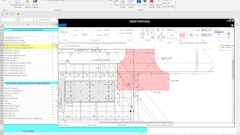Construction-management software provider, Procore Technologies, suggests the risk of error in Excel spreadsheets makes now the time to replace them in your key data management functions.
Of course it’s self-serving for a construction software company to circulate a white paper titled Construction + Spreadsheets = Risk: Why Excel is wreaking havoc on your profitability, but observers of the information technology industry with much less to gain are questioning Excel’s utility.
Criticism of Excel that originated with rumblings among IT professionals and tech blogs has expanded to business and technology publications such as Forbes, which suggests Excel might be “the most dangerous software on the planet.” Fortune accuses Excel of “ruining the world.” The hyperbole is backed up by some spectacular instances of pretty common mistakes working with Excel.
The following excerpt from Procore’s paper helps define the scope of user-error risk with Excel.
“Even the most experienced computer user makes mistakes, and Excel was not designed to be forgiving of errors. Audits have shown that nearly 90% of all large spreadsheets, (defined by the auditors as spreadsheets with more than 150 rows), contain serious errors and that users have up to a 1.79% chance of making an error per cell. Those statistics would suggest that when a spreadsheet gets to be tens of thousands of cells large, there are going to be a lot of mistakes.
“But why are user errors considered to be more plentiful for spreadsheets, compared to other types of programs? Some experts blame the interface, which is deceptively simple. It takes time to develop competence with Excel and the learning curve can be steep, as it is an incredibly complex software. For example, each individual cell can contain any of the following: operational values, document properties, file names, sheet names, file paths, external links, formulas, hidden cells, nested IFs and macros. Each workbook can contain hidden sheets and “very hidden” sheets (ones that do not appear in the Unhide dialog box, whereas hidden sheets do). Even for users who are only attempting basic data entry, it’s easy to unintentionally get bogged down in formulas and equations with a mis-click of the mouse.
“Compounding the issue is the lack of an automated self-checking process in Excel. Users must create their own tests to check for errors in their spreadsheet. There are tutorials online to do so, but it’s not practical to expect every Excel user to seek them out and implement them correctly.”
The Forbes and Fortune stories referenced above describe big businesses that learned the hard way how a spreadsheet that doesn’t check itself can bring down catastrophe.
Procore makes the point that cloud-based software as a service can eliminate inaccuracies caused by formula errors, data entry – even cut-and-paste errors – and updating and sharing successive versions of spreadsheets with collaborators.
Procore’s white paper says:
“Construction software with mobile applications are helping companies retain the benefits of spreadsheets while eliminating the problems. These new solutions offer improved collaboration and communication with unlimited storage space, best-in-class security, and role-based permission levels and version controls. Most importantly, unlike Excel, construction software applications allow users to effectively collaborate on project documentation. With Excel, users have to make updates to the document, save them with a date or version number, and send back for the next person to do the same thing—very inefficient and error-prone. With construction project management software, all contributors have instant access to the document and when they make edits, all parties are notified in real time and able to respond accordingly. There’s no need to save the latest version and redistribute—it’s already in the software for all to see.”
Procore is not the only alternative. Most construction-industry software providers offer cloud versions of their platforms for that very reason.
Look beyond Procore’s vested interest in the message and consider your exposure to Excel-error risk. With the examples of Excel errors’ potentially devastating results, now is definitely the time to identify Excel usage in your company and find ways to automate those functions, and to rethink prohibitions against using cloud-based software.






























